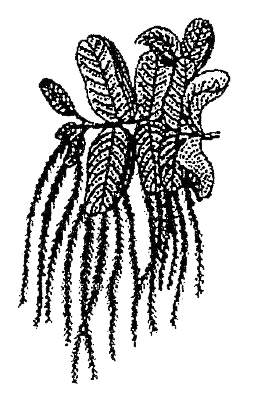Select the incorrect option w.r.t. different types of synapes present in our system
Synapses can be either electrical or chemical
Impulse transmission in a chemical synapse is always faster than that across an electrical synapse
Excitatory and inhibitory neurotransmitters are involved in impulse transmission at chemical synapses
At a chemical synapse, calcium ions are essential for exocytosis of neurotransmitter
To solve the question regarding the incorrect option related to the different types of synapses present in our system, we will analyze each option step by step.
1. Understanding Synapses:
- Synapses are the junctions where neurons communicate with each other. They can be classified into two main types: electrical synapses and chemical synapses.
2. Evaluating the First Option:
- The first option states that synapses can be either electrical or chemical.
- Analysis: This statement is correct. Synapses can indeed be classified into these two types.
3. Evaluating the Second Option:
- The second option claims that impulse transmission in a chemical synapse is always faster than across an electrical synapse.
- Analysis: This statement is incorrect. Impulse transmission across electrical synapses is generally faster than that of chemical synapses because electrical synapses allow direct ion flow between cells, whereas chemical synapses involve the release and diffusion of neurotransmitters.
4. Evaluating the Third Option:
- The third option mentions that excitatory and inhibitory neurotransmitters are involved in impulse transmission at chemical synapses.
- Analysis: This statement is correct. Chemical synapses utilize neurotransmitters that can either excite or inhibit the postsynaptic neuron.
5. Evaluating the Fourth Option:
- The fourth option states that at a chemical synapse, calcium ions are essential for the exocytosis of neurotransmitters.
- Analysis: This statement is also correct. Calcium ions play a crucial role in triggering the release of neurotransmitters from synaptic vesicles during chemical synapse transmission.
Conclusion:
- After evaluating all options, we conclude that the second option is the incorrect statement regarding synapses.
Final Answer:
The incorrect option with respect to different types of synapses present in our system is: "Impulse transmission in a chemical synapse is always faster than across an electrical synapse."
---
- Synapses are the junctions where neurons communicate with each other. They can be classified into two main types: electrical synapses and chemical synapses.
- The first option states that synapses can be either electrical or chemical.
- Analysis: This statement is correct. Synapses can indeed be classified into these two types.
- The second option claims that impulse transmission in a chemical synapse is always faster than across an electrical synapse.
- Analysis: This statement is incorrect. Impulse transmission across electrical synapses is generally faster than that of chemical synapses because electrical synapses allow direct ion flow between cells, whereas chemical synapses involve the release and diffusion of neurotransmitters.
- The third option mentions that excitatory and inhibitory neurotransmitters are involved in impulse transmission at chemical synapses.
- Analysis: This statement is correct. Chemical synapses utilize neurotransmitters that can either excite or inhibit the postsynaptic neuron.
- The fourth option states that at a chemical synapse, calcium ions are essential for the exocytosis of neurotransmitters.
- Analysis: This statement is also correct. Calcium ions play a crucial role in triggering the release of neurotransmitters from synaptic vesicles during chemical synapse transmission.
- After evaluating all options, we conclude that the second option is the incorrect statement regarding synapses.
The incorrect option with respect to different types of synapses present in our system is: "Impulse transmission in a chemical synapse is always faster than across an electrical synapse."
Topper's Solved these Questions
Similar Questions
Knowledge Check
- Question 1 - Select One
select the correct option w.r.t. Marsilea
AHeterosporous vascular spermatophyteBHeterosporous vascular embryophyteCHomosporous vascular crytogamDHomosporous non vascular embryophyte - Question 2 - Select One
select the correct option w.r.t. producers
AherbivorousBtransducerCsecondary carnivorousDall except (2) - Question 3 - Select One
Select the correct option w.r.t. cockroaches
AThe fore wings are tegmina which are used in flightBMalpighian tubules convert nitrogenous wastes into ureaCMales bear short anal styles not present in femalesDNervous system comprises of a dorsal nerve cord and ten pairs of ganglion
Select the incorrect option (w.r.t tissue culture)
View SolutionSelect the incorrect option w.r.t endospemic seeds
View SolutionSelect incorrect option w.r.t. given diagram
 View Solution
View SolutionSelect the incorrect function w.r.t gibberellin.
View SolutionSelect the incorrect option w.r.t. mycoplasma.
View Solution

